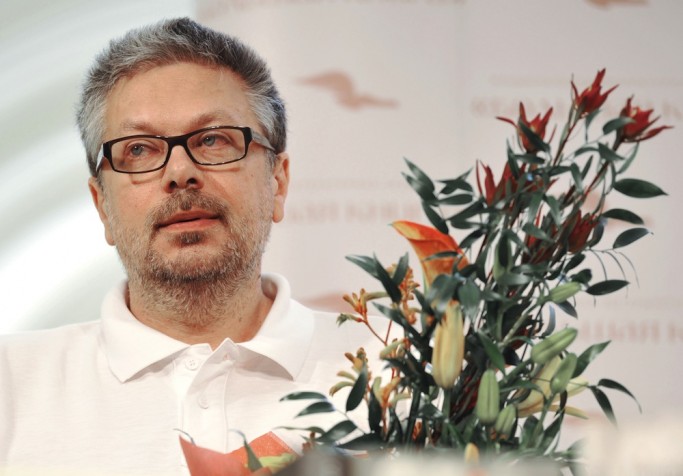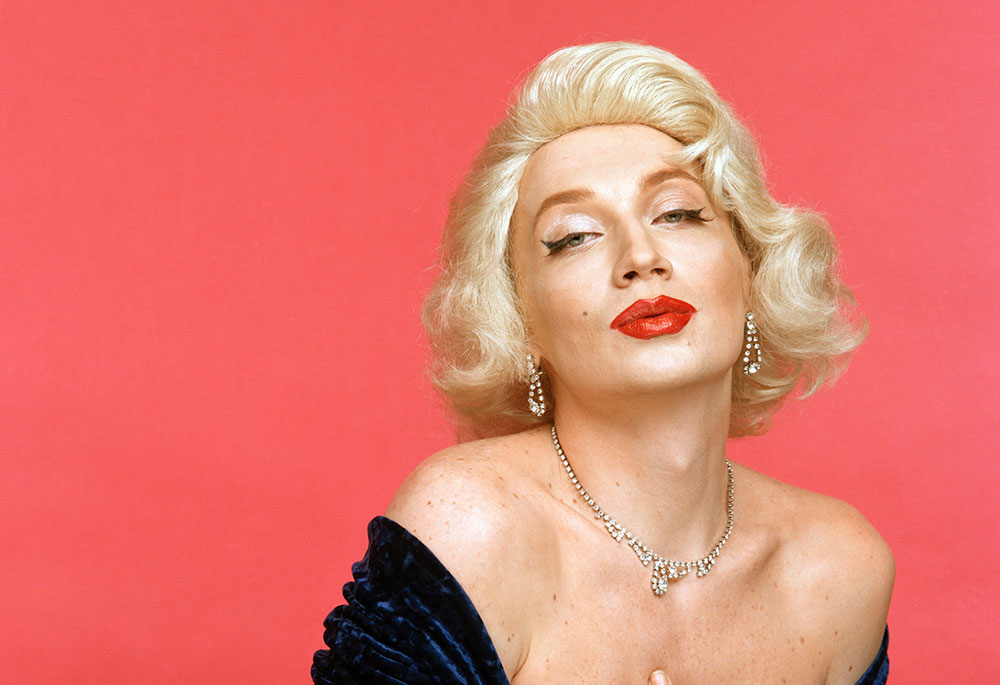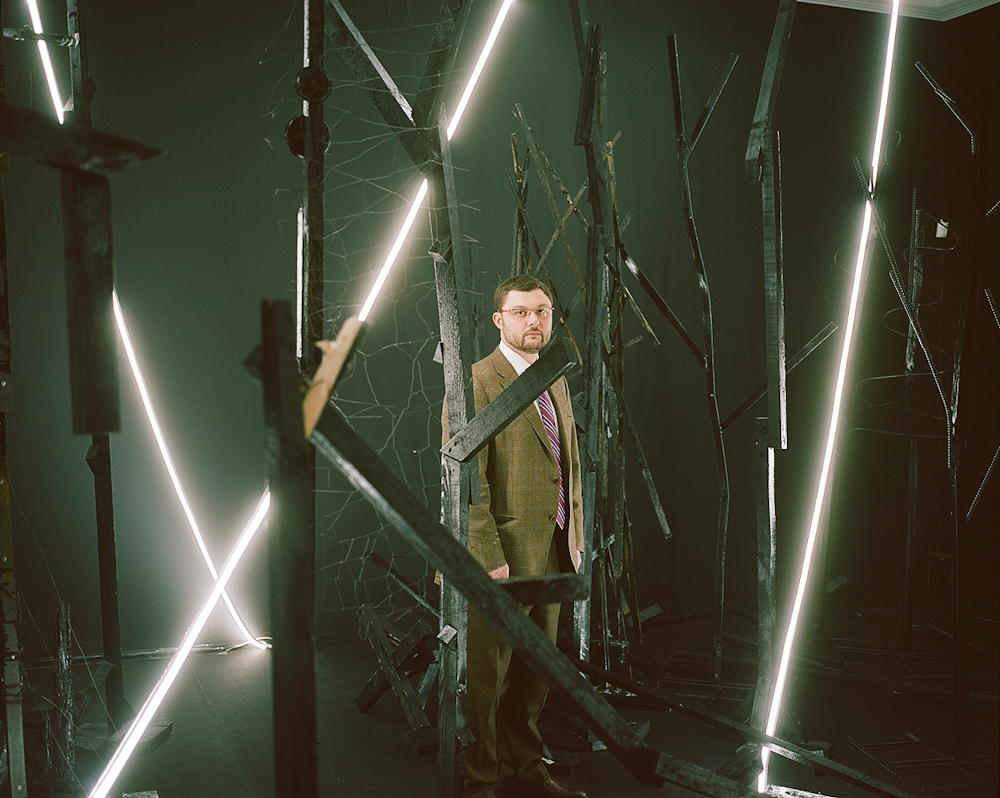Frame of mind: artist Oleg Kulik rethinks religious art

Through a series of different frames, artist Oleg Kulik explores the sacred, the blasphemous and the banal
Oleg Kulik made his name with shocking, provocative performance art with an animal twist — most memorable are his extended periods inhabiting the persona of a dog and his bid for president in the guise of a bull. But now, at a new show, Frames, at Moscow’s Regina Gallery, Kulik’s art is taking a new turn, investigating the role of the sacred in contemporary society. Here he speaks to his wife, curator and researcher Anastasia Shavlokhova about the exhibition and the controversial relationship between art and religion.
I must admit that the move from man-as-animal to the spiritual man was a radical step for me. At the beginning of my career I never planned on becoming a human-dog or on studying Buddhist or Christian philosophy. I was moseying along on the thin ice of art, thinking about the good and the beautiful, when suddenly I found myself caught up in a in the dark waters of animal passions connected to perestroika and the loss of all our cultural bearings. I tried to get myself out of this situation and look at mankind and society at one remove, or from above. I discovered a disinterested, observational point of view and it restructured my life and my art. But now I’ve opened up a third way, an even more complex one. You might call it the human way.
“The way that religious themes have become so controversial and divisive in Russia is very frightening”
The new works exhibited at Regina Gallery in Moscow are frames that are at once “transparent” and visible. They signify absence, a lacuna, but in an intentional way. They express a relation to something that is not expressed. Instead, there is just a silhouette, a contour or an outline. It takes both artist and viewer back in time in order to re-examine the basis of classical aesthetics. These works reference the well-known fact, established in icon painting and very popular with the conceptualists, that it is often the frame that tells you how to interpret what you see. But my frames are not transparent and ephemeral; they are expressive and complex. The frames become the form and the content of the work.
At the entrance visitors are met by the work Two Tibetan Frames, which uses one-way mirrors. The viewer inevitably ends up as part of a performance: they go through a corridor that cuts them off from any sense of certainty about the reality of the world around them. They have the right to choose their own path — either to walk through the corridor and reveal themselves to others or to see others by walking on the other side of the mirror. Either way, no one can avoid this initiation ceremony. In Bomber, a strange, empty sculpture is formed on a huge grid. The absent body is “shaped” by thousands of multi-coloured lamps, which form a harsh contrast with the subject matter. In Madonna, the shape of the virgin’s robes and the infant are created by tiny figures of dancing girls. This multi-layered “frame” reveals a harsh, empty grid at its centre.

The way that religious themes have become so controversial and divisive in Russia is very frightening. There is a clear trend for the Orthodox Church to turn into an agent of the state. Or perhaps it’s the other way round, I don’t know. I’m not happy about this as a Christian, a citizen or an artist. I am a fierce supporter of the separation of church and state. This border has to be absolutely fixed in a secular state.
I remember how back in the Nineties, after Alexander Brener’s performance in the Yelokhovsky Cathedral in Moscow (the performance artist stood up in the middle of a service and shouted “Chechnya!” in protest at government policy), worshippers led him out and told him to get lost. Similarly, after Avdey Ter-Oganyan’s Young Atheist performance in 1998, in which he smashed up icons with an axe, the artist fled to the Czech Republic to avoid prosecution. The list goes on. Oleg Mavromatti emigrated to avoid criminal proceedings after his I AM NOT THE SON OF GOD (2000); the organisers of the exhibition Careful, Religion! in Moscow in 2003 were prosecuted; Voina, who did Cop in a Priest’s Cassock (2008), amongst other things, are being investigated; and Pussy Riot are in prison. What next? Burnings at the stake?
My friends tried to warn me against taking on religious themes, saying there’d be another scandal with the Orthodox Church. But it’s absurd and unacceptable to try and conform to bans on using global cultural imagery outside of the cult. It might be that it will be the apolitical nature of these works — their aestheticism — that will actually be seen as scandalous. But it’s just as absurd to try and conceal what really interests you as an artist. I’ve signed all the petitions and appeared in the media, but my Madonna is not for or against Pussy Riot. It’s about something else. I’m interested in the question of form and content (if we’re going to be old-fashioned about it), or, to be more precise, the question of the frame, of framing as a “reliable” way of understanding elusive meanings.
“Reality is basically a house that you have to live in, but this house isn’t a home right now”
Do I think the artist should be a mirror to society? I find it absolutely terrible that, in the words of poet Yevgeny Yevtushenko, “In Russia a poet is more than a poet,” and that an artist is more than an artist, and that a cobbler is more than a cobbler, and a dog is not a dog and a chicken is not a chicken. All you want is to be able to go into a shop and for there to be decent bread in there. And then go to the cinema and see a decent Russian film, and for the director to be nothing more and nothing less than a good director.
Our spiritual quests have to be framed by a certain reality and this reality is not doing its job properly. Reality is basically a house that you have to live in, but this house isn’t a home right now: it’s draughty, it’s leaking, there are cockroaches everywhere. But it’s the only house you’ve got. You constantly have to be thinking about how to plug up the holes, how to patch up the roof. You’re not living in it, you’re fighting with it. How can you be a mirror to situation like that? Maybe only by grumbling about the fact that the roof is leaking and so on. An artist may well be the mirror of his age, but in an age this disgusting, you don’t want to be a mirror, you want to be ahead of your time.



